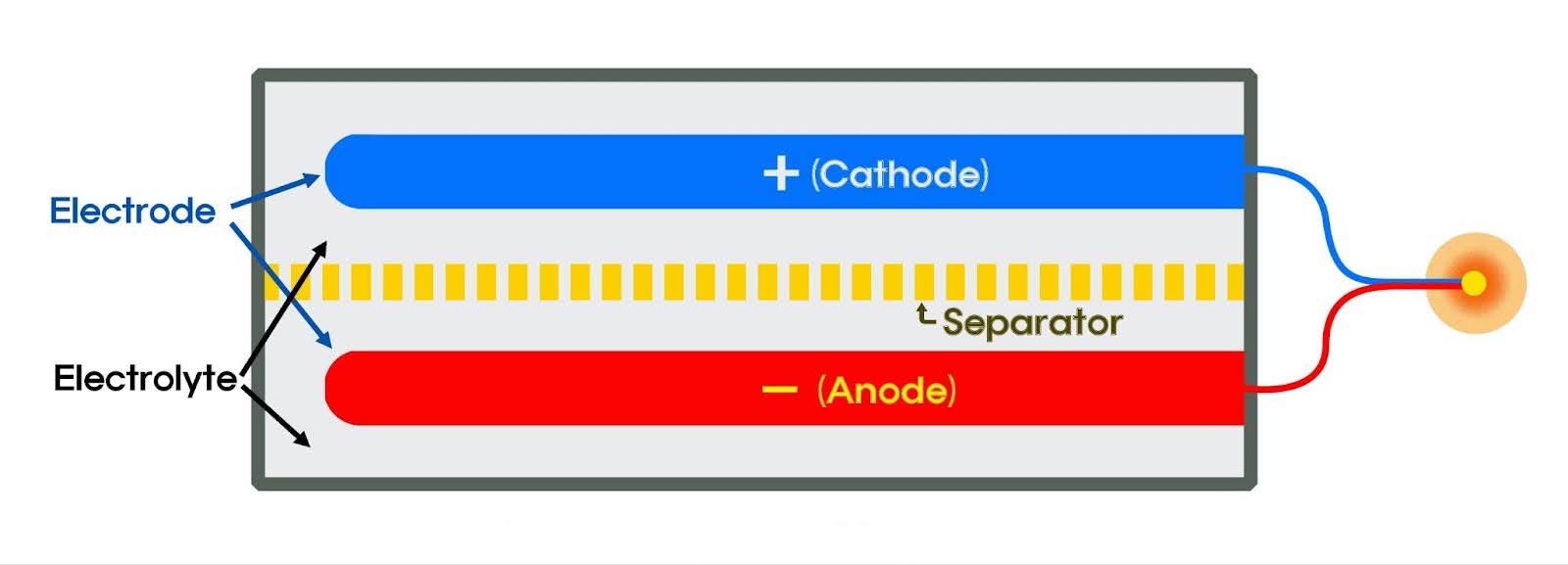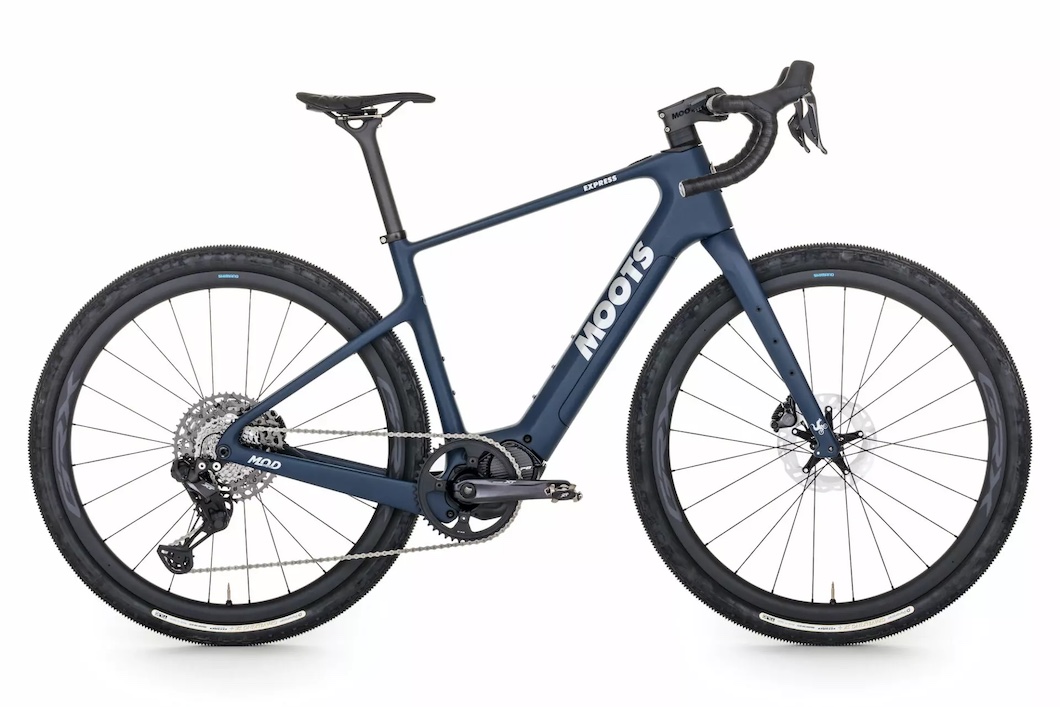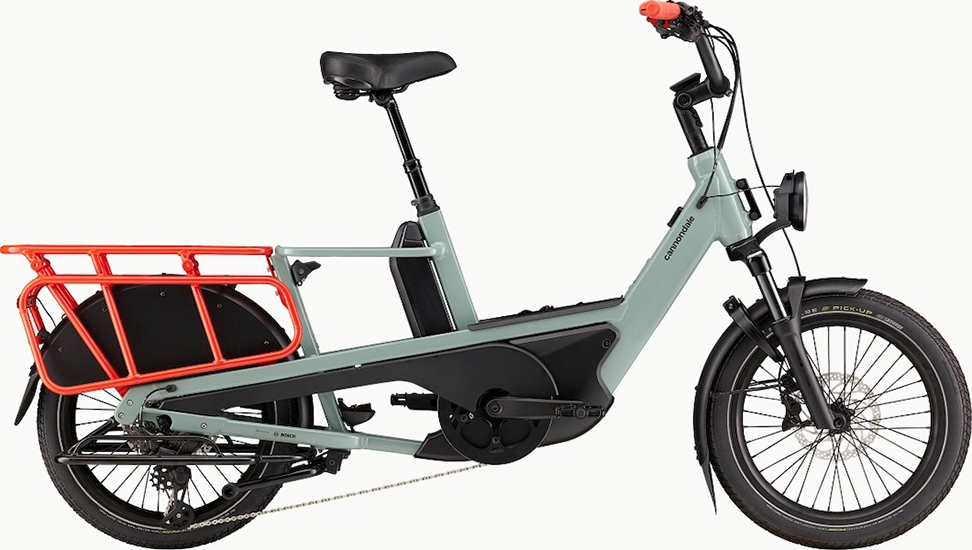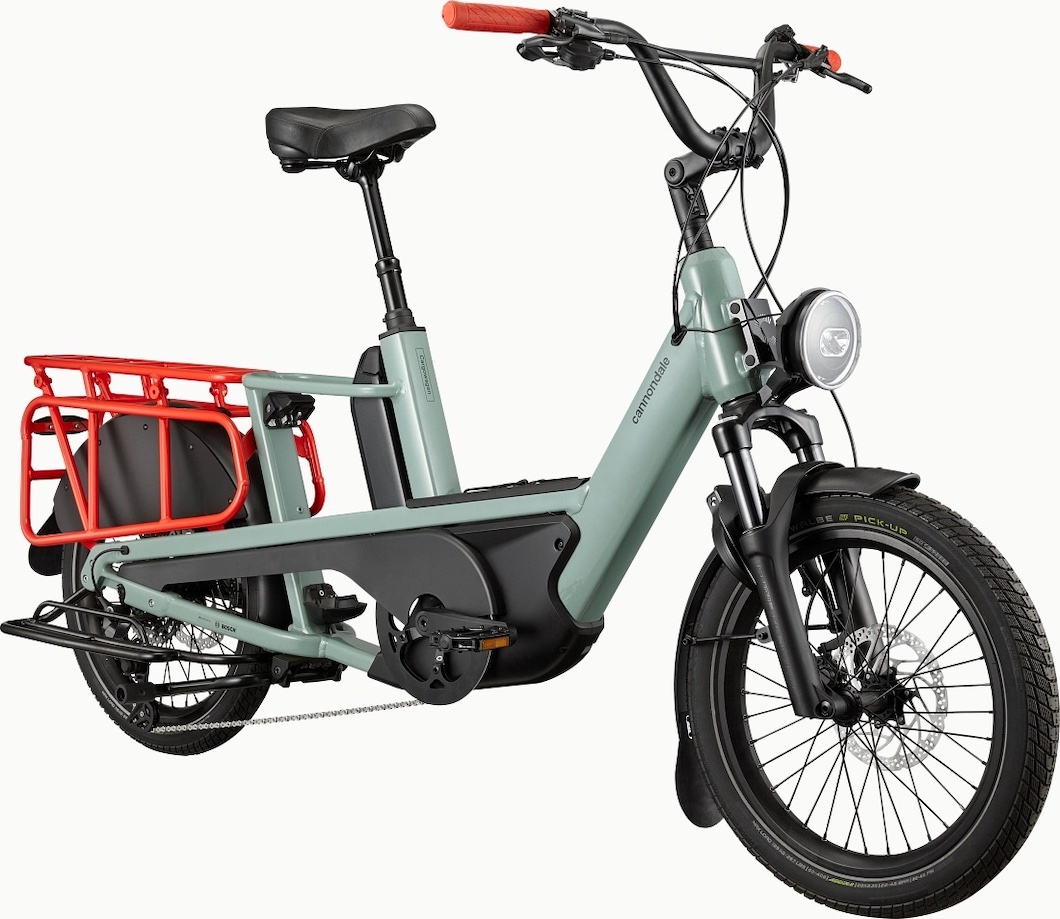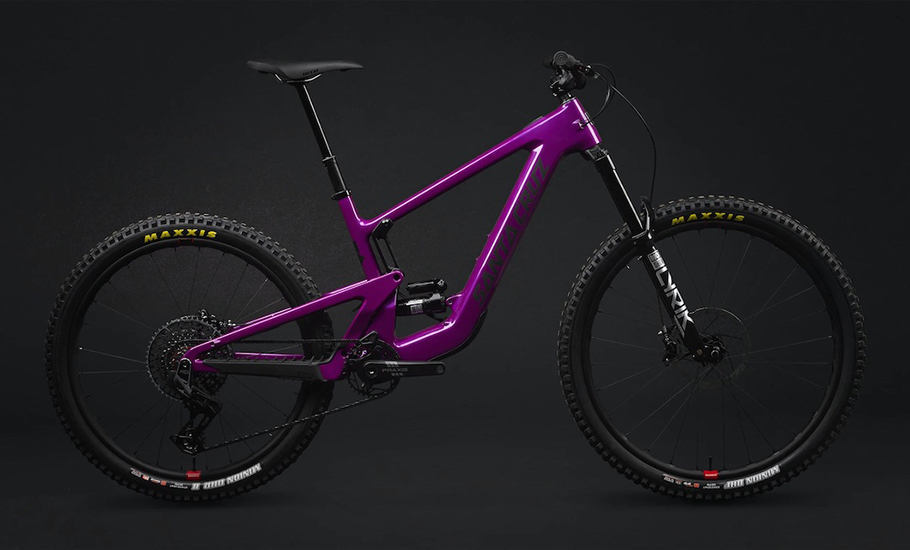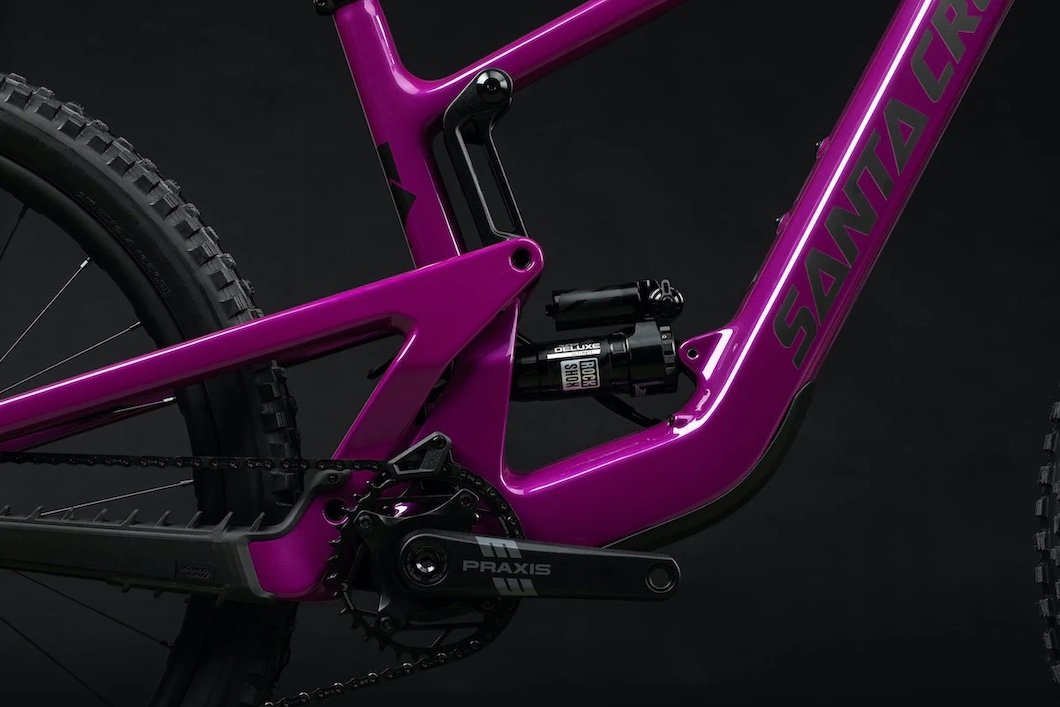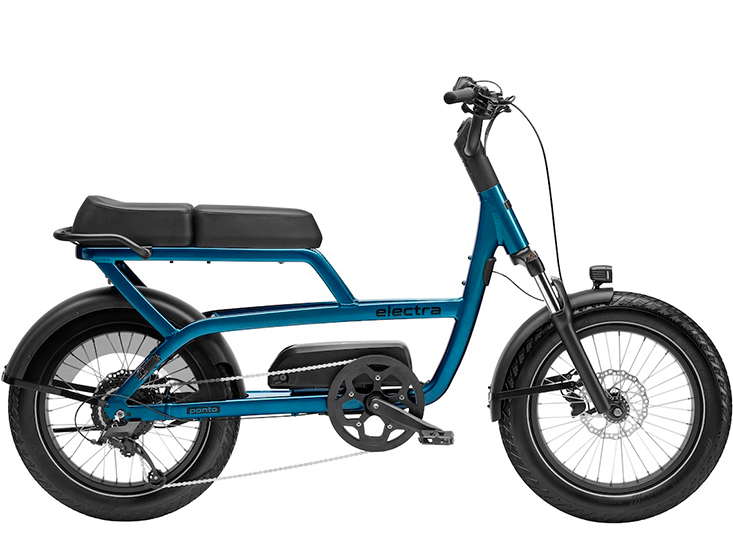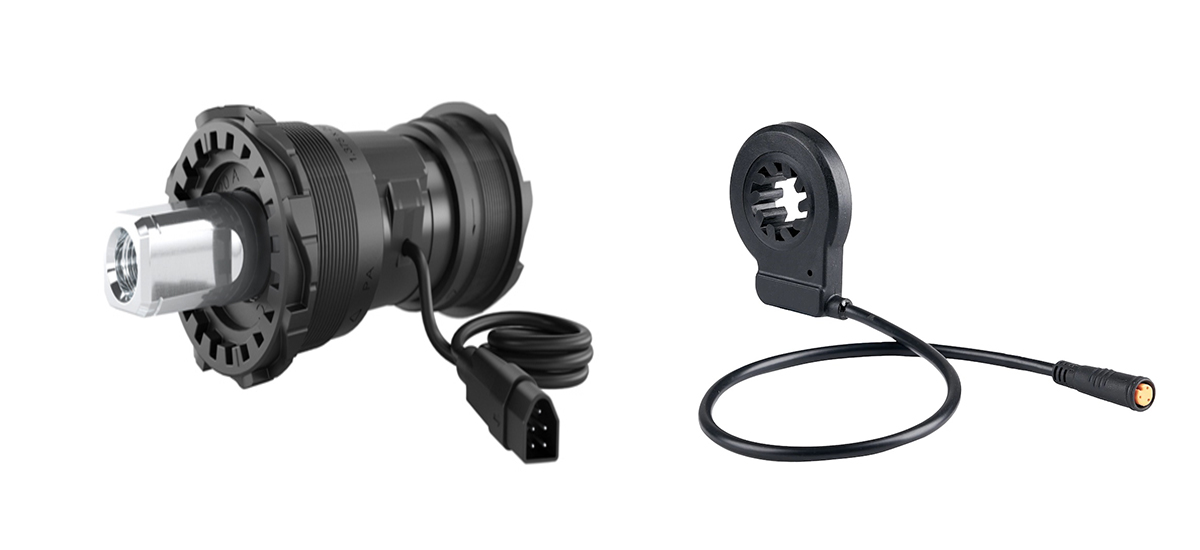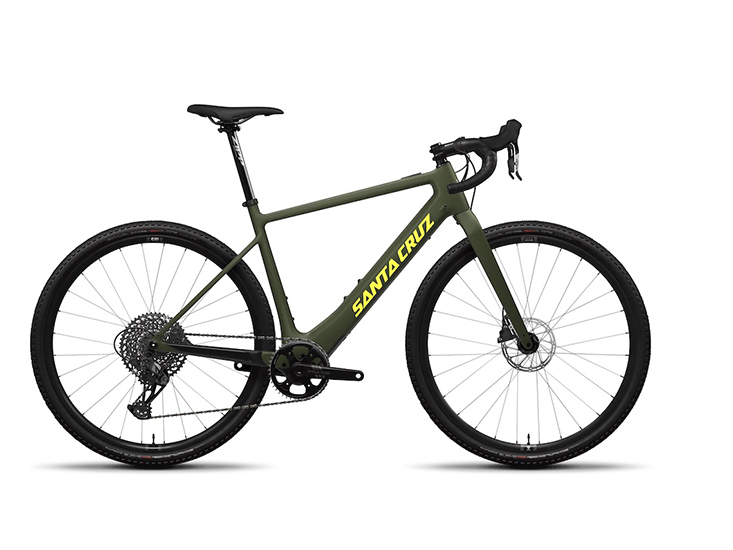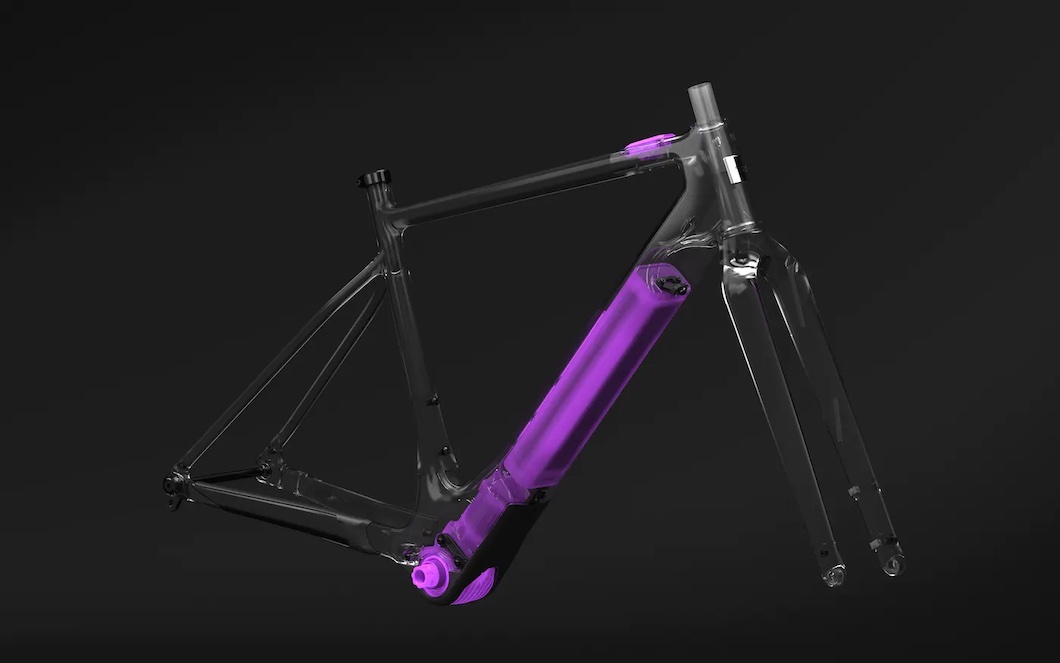What is happening with e-bike fires in NYC, how you can stay safe, and what should the industry do to minimize risks moving forward

Image source: Shutterstock
Unfortunately, not all of those manufacturers make quality their first priority. As a result, there has been a growing number of reports of fires caused by lithium-ion batteries. In New York City alone there have been a reported 172 fires and 14 deaths just in 2023 (as of 09/07/2023).
In most cases, these fires have been caused by batteries that are often either cheaply made or repaired by an unauthorized service center (not by e-bikes with quality batteries that are properly serviced). Even so, consumers have good reason to be concerned.
To explain why these fires are happening, we will examine lithium-ion technology, look back at some of the most high-profile fires, discuss what investigators have found, consider what consumers can do to protect themselves and survey the technologies that may gain acceptance in the near future.
TABLE OF CONTENTS:
Why lithium-ion batteries are used in e-bikes
The rise of micromobility devices as a category owes its existence to the invention of the lithium-ion battery. The reason is simple—energy density. Energy density is how much electricity a battery can produce for its given weight. It is expressed as watt/hours per kilogram (Wh/Kg).
Lead-acid batteries like those in cars and boats have an energy density of 50-90Wh/Kg. Lithium-ion batteries usually provide two to three times that with an energy density of 150-200Wh/Kg.
What this means is that a lithium-ion battery may offer an e-bike a range of 60 miles. Were that same bike powered by a lead-acid battery, it might only go 20-30 miles, and the lead-acid battery may weigh four times as much as the lithium-ion battery.
To be fair, every battery technology we currently have suffers limitations. Some battery types are more stable, but have lower energy density. Some have a shorter lifespan. Some batteries have a high self-discharge rate (the battery charge drops even when it’s not in use).
Lithium-ion batteries enjoy a very high energy density, a long cycle life, low self-discharge rate and relative affordability—all pluses, but they are more vulnerable to fire than some battery types.
So far, no one has invented a battery that provides high energy density, long life, good affordability and high fire-resistance.
Lithium-ion battery design
Batteries make electricity via a chemical reaction. While this is an oversimplification, in broad strokes, two materials interact in a way that frees electrons and those electrons travel from the negative end (anode) to the positive end of the battery (cathode).
The specific chemical formulation of lithium-ion batteries can vary, but e-bike batteries generally use lithium manganese oxide in the cathode and graphite in the anode. These materials are pressed into sheets and then the sheets are layered with separator films to keep the anode and cathode from touching. This “sandwich” is then rolled up and put into a cylindrical case and a liquid electrolyte facilitates the movement of ions from the negatively charged anode to the positively charged cathode.
After manufacturers produce these cells, they are graded as they come off the production line. Cells using new materials (as opposed to recycled ones, which are called “used”) are graded A, B or C, according to their individual capacity. Battery packs will contain a uniform collection of cells graded A, B or C.
Battery packs need cell uniformity because if one cell has a lower capacity than the others, it can begin to produce heat once it is over-discharged. In charging, that lower-capacity cell will reach full charge before the higher-capacity cells are fully charged, at which point the lower-capacity cell will begin to heat. Some heat isn’t a problem, but as we will explain in the next section, at a certain point too much heat will cause a batter’s temperature to pass a threshold and reach what is the ultimate source of most fires: thermal runaway.
One indicator for the grade of cells being used in a battery pack can often be found in the warranty the battery pack carries. Any battery pack supported with a five to seven-year warranty will contain well-matched grade A cells. Battery packs with a warranty of two to three years likely contain grade B cells, or cells that aren’t matched as closely. Batteries given a one-year warranty may be composed of grade C cells.
Most lithium-ion batteries are composed of a number of individual cells that look much like AA batteries. Manufacturers will assemble these cells inside a housing and the number of cells determines the battery’s capacity. How many cells a manufacturer chooses will determine what the battery’s capacity is. More cells equals more capacity (as measured in watt/hours) as well as more weight.
Sean Lupton, CEO of Electric Bike Company, said people need to understand that not all cells are created equal. “It’s like red wine; you can get a $3 bottle of wine and $10,000 bottle, and everything in between. We only use UL-approved top-of-the-line cells.”
He said they only spec cells from the three biggest suppliers: LG, Panasonic and Samsung.
More capacity also equals more fuel for a fire and in our next section we will examine how lithium-ion batteries burn and what is required to extinguish these fires.
How lithium-ion batteries catch fire

Image courtesy FDNY
Fundamentally, all fires involve three main ingredients: a fuel, oxygen and heat. The easiest way to extinguish most fires is to rob them of oxygen. Pouring water on a piece of burning paper will rob the fire of oxygen and put it out.
So why can lithium-ion batteries burn? We posed the question to Ed Benjamin, the CEO and executive director of LEVA, the Light Electric Vehicle Association. Benjamin is a consultant to the e-bike industry and has deep experience in bringing e-bikes to market.
“Lithium is a flammable metal, immersed in a flammable electrolyte,” he said. “It stores a LOT of energy, and that has inherent risks.”
A lithium-ion battery fire is considered a chemical fire; chemical fires occur when a reaction takes place between two fuel sources. In the case of lithium-ion battery fires, those sources are the lithium-manganese, which—despite being a metal—is flammable, and the liquid electrolyte.
The way the batteries are constructed, the cathode and anode are separated by a film that prevents the most reactive materials from mixing. Any time that film is damaged and those materials come into contact with each other, they begin to heat up. At a certain point the reaction between the lithium-manganese and the electrolyte reaches what is called thermal runaway.
Thermal runaway can occur at a relatively low temperature; by low, we mean below the boiling point for water. Lithium-ion batteries can reach thermal runaway at 167 F. However, there’s another, lower critical temperature for lithium-ion batteries. It is called “self-accelerating decomposition temperature.”
Self-accelerating decomposition temperature (SADT) is the temperature at which the chemical reaction that causes thermal runaway begins to self-sustain. That is, the reaction has begun, but there is still time to stop it before the battery combusts. Once a battery reaches thermal runaway, a fire is inevitable. A lithium-ion battery can reach SADT at just 152 F.
How hot is that? Touching an object at 152 F can cause a second-degree burn with a single second of exposure. If a battery is too hot to pick up, it may have reached SADT.
Think of SADT like seeing a pothole in the road while riding. If the pothole is in the e-bike’s path, but 20 feet away, there is still time to steer around it. Thermal runaway takes place when the pothole is just an inch in front of the e-bike—there’s no avoiding it.
In a nutshell, when a lithium-ion battery reaches 152 F, things are bad but can still be stopped. Once it reaches thermal runaway (possibly as low as 167 F), the fire is a foregone conclusion. The electrolyte will combust at roughly 234 F and from there the fire will continue to grow hotter until it reaches the temperature at which lithium burns, which is 3,632 F.
And once one cell catches fire, that fire is going to spread to the other cells.
Once the fire has consumed all of the available fuel (other battery cells and whatever the fire spreads to), it burns itself out. That’s why fire containment—simply making sure the fire can’t spread—is sometimes considered an appropriate solution. If you’ve ever seen photos of firefighters on-scene at a burning EV, but not putting it out, this is because as long as there is still fuel, the fire can reignite due to the high temperatures generated by the burning lithium.
With a fire that burns at 3,632 F and a combustion point of 234 F, any remaining fuel will reignite if it hasn’t returned to ambient temperature.
Because both the lithium-manganese and the electrolyte solution are flammable, lithium-ion battery fires are considered Class B fires, better known as chemical fires.
Aventon’s Tom Sweeney says, “In firefighting there are three ways to extinguish a fire: cooling, smothering or starving.” He cautions people not to try to use water to put out a lithium-ion battery fire. “DO NOT use water on a lithium fire, this will cause a larger fire as lithium combusts when introduced to water.”
Extinguishing a Class B fire calls for a Class B or ABC fire extinguisher. These are extinguishers that release either CO2 or a dry chemical. The important detail to remember is that a burning lithium-ion battery cannot be extinguished with water.
Another helpful product that a business dealing with multiple batteries or e-bikes (such as a bike shop or delivery business) would be a fire blanket, like that from Li-Fire. These blankets are big enough to drape over cars, SUVs and forklifts (depending on the size of blanket purchased).
While a blanket of this sort may not fully extinguish the fire, it would slow the fire’s growth and aid anyone nearby in escaping the fire. A product that can reduce smoke, improve visibility and delay or stop the spread of a fire has great value.
Lithium-ion battery fires in New York City
It’s often said that what happens in New York is a preview of what will happen in the rest of the country due to its unique combination of high population and high population density. New York shows both how e-mobility devices have caught on, as well as how low-quality products have resulted in fires causing property damage, injuries and even deaths.
The numbers alone tell a chilling story. While the NYFD is not yet willing to release their data regarding how many of the fires were caused by specific devices, we spoke with NYFD’s Chief Fire Marshall Daniel Flynn and he confirmed that in their post-fire investigations they track each specific device type, whether it is an e-bike, e-scooter, e-moped, e-motorcycle, hoverboard and more; the only occasion they don’t specify the type of device is if it is too badly damaged to tell what it was. In those cases, they classify the device as “unconfirmed.” They also record if the device was being used commercially or for leisure, what sort of a structure the fire occurred in, and because they are firefighters committed to saving lives, where the fire started relative to structure egress.
NYFD lithium-ion battery fires by year
| Year | Investigations | Injuries | Deaths |
| 2019 | 30 | 13 | 0 |
| 2020 | 44 | 23 | 0 |
| 2021 | 104 | 79 | 4 |
| 2022 | 220 | 147 | 6 |
The clear implication is that as e-mobility devices gain acceptance and are purchased by businesses and individuals, the number of fires is increasing and with that the severity is increasing as well.
A natural question is how 2023 stacks up relative to 2022. Even though the year isn’t finished, NYFD provided us with year-to-date data, as of: September 7, 2023.
NYFD year-to-date lithium-ion battery fires compared
| YTD | Investigations | Injuries | Deaths |
| 1/1/2022-9/7/2022 | 143 | 80 | 5 |
| 1/1/2023-9/7/2023 | 172 | 96 | 14 |
That the number of fires (fire=investigation) is increasing is obvious, but what is particularly disturbing is the severity of the fires. Fatalities have nearly tripled between the same periods of 2022 and 2023.
When we asked Chief Fire Marshall Flynn if there were consistent themes common to most or all of the fires he called out product quality.
While he wouldn’t go into specific details, he said they aren’t seeing problems with high-quality e-bikes, particularly those with UL-certified components.
“The quality of the device is important,” Flynn said. “Buying from a company you found online, the cheapest option, is going to cause a problem.”
He stressed the importance of compiling and analyzing as much data from each fire as possible.
“If you don’t have the data you don’t realize there is a problem,” he said.
Despite the difficulty of extinguishing a Class B fire, Flynn was unequivocal about their approach to lithium-ion battery fires.
“We don’t let any fire burn,” Flynn said.
FDNY calls their approach “aggressive interior attack.” They go into the structure and fight the fire, extinguishing it as quickly as possible. This is an approach that puts firefighters at much greater risk, but without it, because the fires generate so much heat, they can spread quickly.
To further underscore the danger and severity of lithium-ion battery fires Flynn said that once the fire has been extinguished a hazardous materials (or HAZMAT) team inspects the site to make sure no flammable materials remain that could reignite. He emphasized their need to be thorough both during and after a fire.
Flynn said their job isn’t complete once the HAZMAT team is finished. After compiling their data, they share it with the Consumer Product Safety Commission and their data has helped lead to product recalls.
Understanding the causes of battery fires

Image courtesy FDNY
Are all fires caused by electric bikes?
Now that we understand how lithium ion batteries catch fire, we can move onto understanding the causes of lithium-ion battery fires.
Notice how we didn’t say “started from e-bikes” there. We said “lithium-ion batteries” on purpose—to clarify that not all fires being reported as e-bike fires are actually caused by batteries in e-bikes.
For example:
- In one two-day stretch, April 20-21, 2022, the New York City Fire Department responded to five different lithium-ion battery fires. In photos from three of those incidents photographs show that the devices in question were e-scooters and in the fourth the device was an e-motorcycle. A photo from the fifth incident showed a burned-out bank of batteries.
None of the fires were caused by e-bikes from reputable manufacturers.
- On March 5, a fire caused by a single lithium-ion battery broke out at the Concourse Food Plaza in the Bronx. Fire crews arrived on the scene within five minutes and despite spraying the battery with water the fire spread throughout the building, growing into a five-alarm fire that required 50 units comprised of more than 200 firefighters to extinguish. The fire ultimately injured seven people—five firefighters, one EMS professional and one civilian; fortunately, none of the injuries were life-threatening.
Video reports of the fire clearly show an e-scooter with small wheels and no pedals—not an e-bike from a reputable manufacturer. In a subsequent statement about the fire, Fire Commissioner Laura Kavanaugh used the term “e-bike” four different times as she referred to the cause of the fire. Multiple subsequent media reports referred to an e-bike as the cause.
- An early May fire in a fourth-floor apartment in Manhattan’s Washington Heights neighborhood killed four residents of the building. The FDNY called the device an e-bike but subsequent news reports clearly show a motorized razor scooter.
We aren’t suggesting FDNY is misleading the public; they face a challenge in communicating lithium-ion battery fire risk to the public. They are communicating in a way that will get the point across to most people. For many, anything with two wheels and a motor is an e-bike. There is, however, a real difference between the sort of e-bikes most of the industry produces and the devices that are causing the majority of the fires.
However, at Electric Bike Report we believe it’s important to distinguish which micromobility devices are causing the fires so consumers can be more properly informed, and so government authorities and agencies (both local and federal) can more effectively establish laws and regulations to help protect consumers.
To be clear: There are e-bikes that are catching fire. If you are an owner of an e-bike you need to know how to properly maintain your battery and charger, and how to properly charge your bike. DO NOT take these statements as us trying to say e-bikes are never the problem. We are simply pointing out that this figure includes every source of a fire attributed to lithium-ion batteries, including e-mobility devices, cars, laptops and phones. Of course, we don’t have a breakdown of which brand of battery or charger was the culprit.
Common Causes of Battery Fires
Across the US there have been more than 200 fires in 2023 involving lithium-ion batteries in a broad variety of products—again, not just e-bikes but also electric scooters, mopeds, and any other micromobility device being powered by a lithium-ion battery. The causes of the fires can vary.
Common causes include:
- A faulty cell in a battery begins a chain reaction that leads to thermal runaway
- A short in a charger that causes the plastic case to melt, catch fire and then spread to the battery; once the battery case catches fire, the cells inside will heat up until they reach thermal runaway
- Using a repaired battery; cells must be matched carefully for capacity and a mismatched cell can heat up to the point of thermal runaway if overcharged
- A charger was plugged into a power strip or extension cord that draws too much current, melts, catches fire and the fire spreads to the charger and on to the battery
- Using a battery or charger that is visibly damaged as a result of being dropped, left outside or other neglect; a short can cause the electronics to heat until the case melts or the cells enter thermal runaway
- Using an incompatible charger/battery combination, i.e., using a charger or battery that did not come with the e-bike; this is especially problematic when using a charger that delivers more amps than the battery can handle, such as a 3A charger being used with a 2A battery; overcharged batteries can enter thermal runaway; the easiest way to make this error is to purchase a battery or charger from a source other than the e-bike’s manufacturer
- Leaving a battery on a charger beyond the point at which it is fully charged can cause cells to grow hot due to being overcharged; overcharged cells can enter thermal runaway
How consumers and e-bike brands can prevent battery fires
Before we dig into preventative steps that both brands and consumers can take to mitigate risks, we want to stress that the great majority of e-bikes and e-bike batteries will never cause any problems. Here at Electric Bike Report, we have tested hundreds of e-bikes and not one battery has ever caught fire. We exercise best practices, but we also choose products that meet our standards for consumer safety.
We have worked hard to establish strong relationships with e-bike makers. Part of that owes to our practice of couching criticism in a constructive fashion. We’re happy to point to better solutions when we see them. Sometimes, they even turn to us for our advice. Our suggestions here are meant to point to the positive steps we see the industry taking, as well as giving consumers a set of practices that will keep them, their loved ones and their homes safe.
Buy an e-bike from a reputable manufacturer; Ul-Certifications
The greatest precaution that e-bike shoppers can take when purchasing an e-bike is to make sure the e-bike in question has been certified to one of two UL standards. UL 2849 is a standard that looks at the whole of an e-bike’s electronics—battery, motor, controller, charger, display and wiring harness, as well as the throttle if it includes one. UL 2271 looks at the battery alone. Which of these standards should be mandated for e-bikes in the US is a matter of intense debate within the industry.
For the careful consumer, buying an e-bike that has been certified to UL 2849 is the most cautious approach.
We talked to Larry Pizzi who is one of the e-bike pioneers in the US. He worked with People for Bikes in helping to craft the 3 Class system and works for Alta Cycling Group as their Chief Commercial Officer.
We asked Pizzi his advice for consumers looking to make the most conservative purchase possible with regard to safety.
“The best way to ensure a safe and reliable e-bike is to purchase it from an established, reputable brand with a domestic presence and a local after-service program for the rider,” he said. “The best e-bikes are equipped with complete drive systems (All of the electronic components including battery pack, charger, motor/drive unit, control electronics, user interface, and wiring harnesses) from a unified source such as Shimano, Bosch, Yamaha, Brose (Specialized), Hyena, Fazua, Bafang, and others, are an excellent first step. If you are unsure, ask the brand or retailer to show you that the battery pack and charger have been tested by an accredited testing laboratory and certified to one of the recognized standards, such as UL or EN (Consensus safety standards UL 2849, EN 15194 for complete e-bike drive systems or the battery standards in Section 11 of UL 2849 and Section 4.2.3 of EN 15194:2017, both of which have proven effective in the field in preventing fires and other thermal events).”
The lack of UL 2849 certification should not be taken as an indication that the e-bike should be avoided. Not every e-bike manufacturer uses a complete system that has gone through UL certification. There are companies out there that mix components from different e-bike component makers. E-bikes that assemble their electronics from components made by multiple companies may be high-quality, or not.
When an e-bike maker specs a complete system from Bosch, that system has been UL certified. That makes life simple for the cautious consumer. However, should an e-bike maker want to use a Bafang hub motor, wiring harness, torque sensor and display, but a Samsung battery and charger, even if all those components have been part of other UL 2849-certified systems, the combination of Bafang and Samsung components must be tested together to be awarded UL 2849 certification. Most brands find that testing to be prohibitively expensive for just one model; it takes a big bite out of profit.
When an e-bike lacks UL 2849 certification, buyers should look for a different UL rating, 2271. This certification applies to batteries alone.
We asked Lectric’s CEO, Levi Conlow, his opinion regarding the two UL standards.
“In the industry, the debate is in what I would call a ‘let’s agree to disagree’ position,” he said. “UL makes a strong recommendation to address battery fires by mandating certification on the entire bike vs. just dealing with the battery. It certainly doesn’t hurt that the UL 2849 standard makes the entire e-bike UL compliant, but it makes it more expensive for manufacturers to address the root problem with the quality of the battery itself, which the UL 2271 standard addresses.”
Chief Fire Marshall Flynn was succinct, if agnostic. He said, “Anything that would increase the safety of a product we will support.”
For those shopping for a new e-bike, the bottom line is straightforward: Look for e-bikes that have been certified for UL 2849, and if they lack that, look for UL 2271 as Plan B.
There are a few nuances to how products are marketed when it comes to this:
- UL compliant means that a third-party, UL approved lab has tested the product to meet or exceed UL’s standards.
- UL listed works with a UL lab and can bear the UL logo.
Many brands technically have product that may meet these standards now, but getting them tested is an essential step in the process.
Benjamin, at LEVA, cautions consumers not to expect changes overnight.
“And keep in mind that the USA bicycle industry is hundreds of companies, and getting such a group to ‘adopt’ a set of voluntary standards is challenging,” he said. “Some companies will. Some will not. The bike trade groups and the CPSC are encouraging adoption of third party testing to appropriate standards such as UL.”
Aventon’s Sweeney had some practical tips for people currently shopping for an e-bike.
“Do they use a proprietary battery? Proprietary charger? These things are also great indicators that a company has taken the time to understand their product to build a complete product,” he said.
He added, “Cells to look for are Panasonic, Samsung, and LG … in that order. Proprietary chargers are a good sign that a quality battery is being used and will be supported for the long run.”
Other safety standards pertaining to e-bike electrical systems
UL-certification is going to be the standard most often seen and referred to in the United States. It’s not the only standard that exists though, and some fall under the umbrella of UL-compliance too.
We won’t go too in depth on all of them here, but here are some of the notable standards you may come across:
- TÜV Rheinland – Intrenational standard for safety in electric outputs. Often found on brands based outside of the U.S. selling products in the States. Recently recognized by OSHA as a valid lab for UL 2849 standards.
- EN 15194 – European standard that largely predates e-bike popularity in the U.S. Focuses on certifiying e-bikes as a whole as opposed to UL 2849’s focus on the electrical system of an e-bike, or UL2271’s focus on the battery.
Good battery hygiene
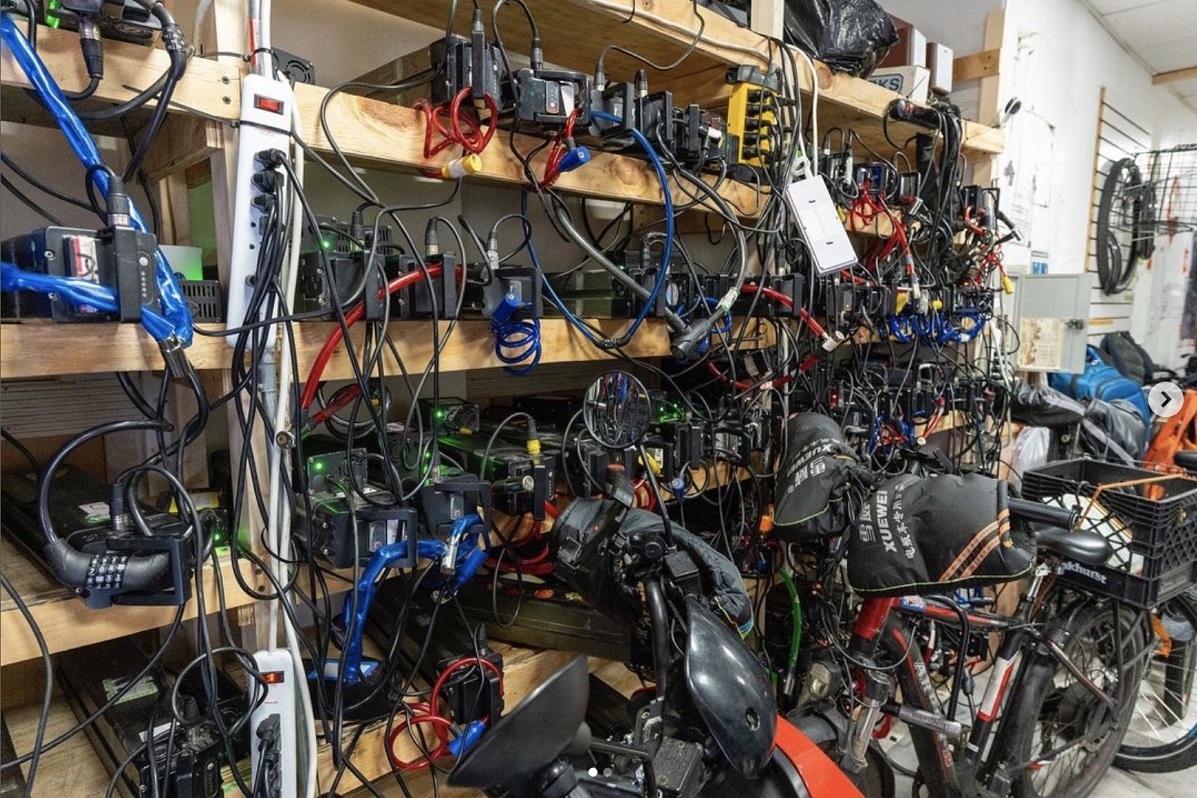
Is not this.
When we buy a car, there are certain things we know we need to do to take care of it. We change the oil, wash it, buy new tires when the old ones are worn. Well e-bikes are no different and there are steps we can take to make sure our e-bike’s battery lasts as long as possible.
In our conversations with industry experts, we received a number of suggestions for how to care for an e-bike’s battery and have assembled those into a checklist of best practices.
2. Follow the instructions in the owner’s manual.
3. Charge indoors in a place where the temperature will remain between 50 F and 77 F (10 C–25 C)
4. Select a location with good air circulation to keep the charger cool while charging
5. Plug the charger into the e-bike or battery first, then plug the charger in the wall; this prevents the possibility of an arc that could damage electronic components
6. Plug the charger directly into an outlet; do not use extension cords or power strips.
7. Make sure there are no flammable materials near the battery and charger.
8. Never charge when no one is present.
9. Do not leave the battery charging overnight. Once the battery is charged, disconnect it from the charger.
10. For the forgetful, use a timer to turn off the charger after four to six hours.
11. Mount a smoke detector above the charging area.
12. Never try to use or charge a damaged or defective battery.
13. Buy quality batteries. Not used, cheap, or reconditioned batteries.
14. Be sure whoever is present understands that such a fire requires a rapid evacuation.
Replacing an older battery
Lithium-ion batteries supplied with e-bikes are generally considered to have a lifespan of four to five years. That means riders who purchased their e-bikes as recently as 2019 may be nearing the life cycle of their battery’s life.
There are a number of clues that it may be time to replace an e-bike’s battery. Based on guidance from Ed Benjamin, Levi Conlow, Larry Pizzi and Tom Sweeney, we’ve assembled a checklist for riders to run through in order to judge if it’s time to replace the battery.
It’s time to replace your battery if:
2. If the battery is hot to the touch at any time, whether riding, charging or in storage. Thermal runaway can begin at 233 F internally. A battery that is hot to the touch is trouble.
3. If the display shows error messages related to the battery, that is likely a sign that it has reached the end of its life.
4. If there is a loss in other performance metrics besides range, such as slower acceleration or an inability to hit top speed, that battery is at the end of its life.
5. If the battery exhibits a sudden drop in voltage; when this happens a rider will experience a sudden decrease in speed—that battery is compromised.
6. If the casing bulges, swells or exhibits cracks, it needs to be replaced.
7. If the battery produces smoke, a burning smell or any other foul odor, whether in storage, while charging or in use, it needs to go.
8. Signs of corrosion on the battery or charger contacts are signs the battery is compromised.
9. If the battery charges quickly and discharges quickly, resulting in a loss of range, it should be retired.
10. If the battery becomes fully immersed in water—as in under water, not rain—that can cause corrosion and compromise the battery; replace it.
Any one of these signs provides sufficient cause to replace the battery. Multiple signs aren’t necessary, but more than one makes replacement more urgent.
When replacing a battery, the old battery needs to be recycled. This step is easy. Simply contact Call2Recycle. They are endorsed by People for Bikes and will be able to help someone dispose of their old battery responsibly.
Purchase a replacement battery only from the original manufacturer
Buying AAA batteries for a TV remote can feel like shopping for a car. There are a multitude of brands with varying capacities, not to mention the opportunity to purchase rechargeable batteries. The myriad choices can be frustrating.
The situation is far simpler when it comes to replacing an e-bike’s battery. Even though batteries can and will vary in capacity, physical size, housing and style of mount, there is an easy solution to all those variables. Go to the e-bike manufacturer for the replacement.
For owners of e-bikes with internal batteries, due to the way the battery fits in the frame, there may be no other option than the e-bike manufacturer.
When we spoke to industry experts, their advice uniformly began with buying a battery from the bike manufacturer. That’s the best way to make sure that one apple is replaced by another apple. Most manufacturers offer replacement batteries in the accessories section of their website. Several manufacturers told us that if an e-bike owner doesn’t see the battery for their model on the company’s website to contact customer service to see if they might have replacement batteries available.
If for some reason a battery isn’t available from the manufacturer, a replacement battery may still be easy to source. Many e-bike retailers will stock batteries from brands such as Bosch and Shimano. If they don’t have the battery in stock, they should be able to order it.
For riders who don’t have a relationship with a local retailer, external batteries like those made by Bosch and Shimano can be ordered online. Before ordering, it’s important to know the battery’s capacity (watt/hours) and voltage. It’s important to match those details exactly.
Another tip from our industry experts was not to shop by price. As Alta’s Pizzi said, “If the price seems too good to be true, it’s because it is.”
Is lithium-ion the future for e-bike batteries?
As we saw earlier, e-bikes are possible thanks to lithium-ion batteries. Even if lithium-ion technology wasn’t inherently flammable, the industry would still have plenty of incentive to look for better battery technologies. If battery makers could create a 720Wh e-bike battery that weighed 3 lbs. instead of 6 lbs., they would.
There are several other battery technologies that e-bike makers could consider for powering e-bikes. Some of them are more promising than others.
One of those alternates is lithium-iron-phosphate composition. This is the technology used in Tesla car batteries. This technology is touted as safer than lithium-ion—it’s easy to find media reports and marketing materials that say it won’t burn. And while it is safer, it’s not foolproof; there are plenty of accounts of Tesla batteries burning.
The big plus for lithium-iron-phosphate (LiFeP04 or LFP) batteries is their lifecycle. They typically last four or five times as long as lithium-ion batteries. Their temperature operating range is also greater than with lithium-ion; they can operate from -20 F to 140 F.
Unfortunately, the pluses end there. Because there aren’t many producers of LFP batteries, they are more expensive than lithium-ion on a per watt/hour basis. The bigger issue is that their energy density is lower than found in lithium-ion batteries. As we mentioned before, most lithium-ion batteries fall in a specific-energy range of 150-200Wh/Kg (the range is greater than that, but that’s where the bulk of today’s batteries fall). LFP batteries fall in a range of 90-120Wh/Kg, which means that an LFP battery will weigh at least 25 percent more than a comparable lithium-ion battery.
More promising is a variation on lithium-ion technology known as solid-state. With this technology, the flammable liquid electrolyte is replaced with a solid. The most obvious advantage of this technology is that it is much less likely to experience thermal runaway and catch fire. Operating temperatures are said to be 20-30 percent lower than with lithium-ion.
Solid-state batteries promise a number of other performance improvements. Energy density will be higher. QingTao Energy is producing a solid-state battery with a specific energy of 368Wh/Kg. Charging is reported to be much faster as well; there are reports of solid-state batteries reaching 80 percent of total charge in less than 15 minutes. The life cycle of the battery will also be greater.
Unfortunately, this technology, while not still in its infancy, has yet to emerge from the bleeding edge. Very few manufacturers make these and none of them have scaled production to the point where they might meet the demands for a consumer product.
Oh, and did we mention? Solid-state batteries are hella expensive.
Consumer safety
When asked about how the e-bike industry will evolve to better protect e-bike owners, Sean Lupton, EBC’s CEO, said, “We need oversight in the US. We’re glad to see the CPSC getting involved.”
He acknowledged that the CPSC can be, like any large government agency, slow to move, but that doesn’t trouble him. He pointed to how insurance rates for manufacturers serve as an incentive to produce quality products.
“Insurance companies are becoming more familiar with e-bike risk,” Lupton said. “Insurance companies have seen the aftermath. They are far more selective about who gets competitive rates. You’ve got to have a good track record.”
Companies with shoddy products will begin to face hurdles, he observed. “Landlords [for commercial real estate] are looking into the safety of battery tech. You won’t be able to sign a lease without insurance. And to get insurance the batteries will have to be approved.”
In short, he says, insurance companies will fulfill the enforcement role.
Hurdles for the e-bike industry
Every time there is a news report that an e-bike’s battery caught fire, that story hurts the reputation of e-bikes as a whole. Even if the product in question wasn’t an e-bike, the fact that the non-endemic media (TV news, newspapers, etc.) often reports the story using the word “e-bike,” it undermines trust for e-bikes as a category.
Lectric’s Conlow says that infrastructure needs to catch up with the industry and riders.
“I think the biggest changes to e-bike batteries in the future will come on the heels of legislation and infrastructure changes. So much of what we need to keep this industry growing is centered around infrastructure support. Imagine e-bike charging stations being used as frequently as Tesla superchargers. Legislation will help drive this new industry forward. For so long there have been no guidelines for e-bike safety.”
As an industry, we have two educational fronts to address, both of which we’ve tackled in this feature. The first is at the point of purchase: When purchasing an e-bike, verify that the e-bike’s electronics have been UL certified, and if the entire system hasn’t been certified, then at least make sure that the battery is UL certified. The perception problem we outlined above will make it increasingly important for e-bike makers to publicize that their e-bikes are UL certified, which is to say, it will become easier to find this information on an e-bike maker’s website.
The second point of education that we have a responsibility to impart to consumers is how to properly care for their e-bike as a whole and their e-bike’s battery specifically. It’s not hard to properly charge and protect an e-bike’s battery, but e-bikes can’t be left outside in the elements the way ordinary bikes often are. Refer back to our section on good battery hygiene that breaks down best practices that will allow you to keep your e-bike’s battery in good working order for years to come.
That there is any ongoing debate in the industry regarding whether we require manufacturers to adhere to UL 2849 (the whole system) vs. UL 2271 (battery alone) is difficult to understand. It’s hard to say if requiring all e-mobility products to adhere to UL 2271 would have prevented all of the fatalities that have occurred, but judging from video of some of the fires (and explosions) that have taken place, it is safe to say there would have been less loss of life.
Takeaways
For current e-bike owners who might feel some concern about whether or not their e-bike constitutes a source of risk, a simple reality check is to do a quick search here on Electric Bike Report for the brand of e-bike. We don’t recommend searching for the specific model. Here’s why: We’ve reviewed many of the e-bikes out there, but we haven’t reviewed them all. In our experience a manufacturer either produces quality products or they cut corners; they don’t do both. That’s because a company that will do the work to produce a good product doesn’t want to risk reputational damage from a string of fires followed by a recall.
Even if we haven’t reviewed a specific model, we may have reviewed something from that brand, and if we’re reviewed the brand, then that most likely means they made the grade and produce e-bikes we are willing to recommend (there are a few bikes we thought would make the grade, brought them in to test, and then they didn’t perform well in our testing and reviews – so read the review and check).
For those shopping for an e-bike, our advice is the same. Look at the brands we’ve reviewed, and start with our list of best electric bikes. The brands we have the greatest respect for will also be the brands with the greatest number of e-bikes reviewed.
There’s another easy way to vet an e-bike’s quality. Buy from a local e-bike or bike retailer—not a big box retailer. At some point everyone needs help from a bicycle/e-bike retailer, and starting the relationship by buying from them will pay dividends.
We’ve been at this a while and with each e-bike we review we’ve taken the battery through numerous charge cycles. We’ve never had anything burst into flame. Trust us, it’s not hard to find an e-bike that you can safely charge in your home.


